[ad_1]
[Updated 7/5/2021] There are numerous beautiful forests in the world, and collectively they cover about one-third of Earth’s total acreage.
These forests provide the oxygen we need to breathe as well as sequester carbon, that confounding climate change catalyst. Forests also protect our world’s water supply: When they disappear, we inevitably get deserts.
Despite these commonalities, the biggest forests in the world are impressively diverse. Each offers its own unique combinations of trees and understory plants. Each is home to a diverse array of animals, fungi, mosses, insects, and people.
These incredible forests produce all sorts of food for us to eat, and provide medicines that have healed humans for centuries.
In other words, forests are really, really cool, which is why so many of us want to explore them when we travel the world. Here’s a look at 25 of the largest forests in the world, each of which deserves a place on any nature lover’s world travel bucket list!
READ MORE: 30 Facts About Deforestation & its Effects on the Environment
BIGGEST FORESTS IN THE WORLD BY CONTINENT
- Forests in Africa
- Forests in Asia
- Forests in Australia
- Forests in Europe
- Forests in North America
- Forests in South America
- FAQs and Forest Facts
FORESTS IN AFRICA
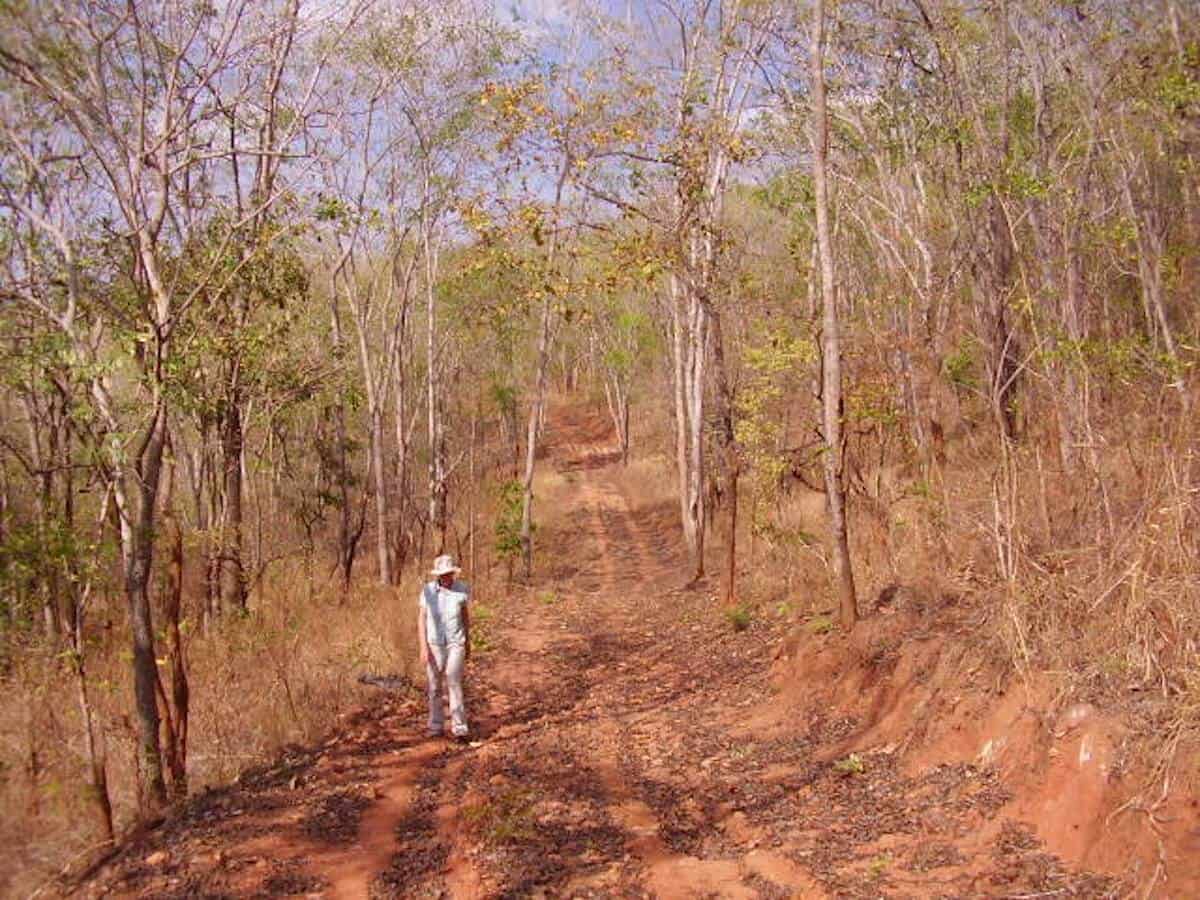
MIOMBO WOODLANDS
The Miombo woodlands cover over 900,000 square miles in central Africa. They’re home to millions of people, and spread across Angola, Democratic Republic of the Congo, Malawi, Mozambique, Tanzania, Zambia, and Zimbabwe.
Although the region is dominated by the Miombo tree, there are over 300 other species of trees and 8500+ different types of plants. Much of this vegetation goes towards feeding an amazing array of wildlife, including Giraffes, Rhinos, Elephants, and grazing Antelope.
Impressively, much of this massive forest is still intact. But it has recently begun to suffer due to the rise in ranching, agriculture, and charcoal production.
Equally (if not more) concerning is the rise in the illegal poaching of Rhinos and Elephants for their horns and ivory tusks. Luckily, numerous conservationist and activist groups have worked to protect huge areas of these beautiful forests.
READ MORE: Exploring Tarangire National Park, Tanzania
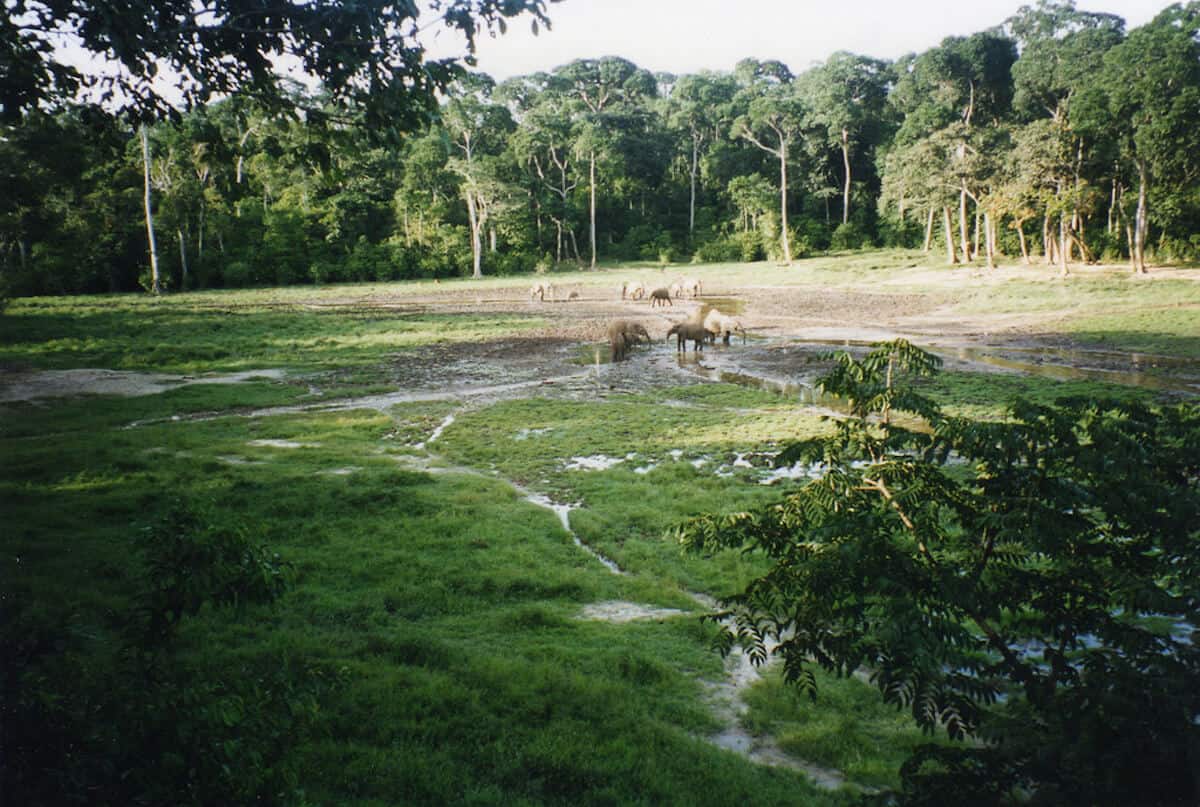
CONGO BASIN FOREST
Home to around 40 million people, the largest forest in Africa covers much of the continent’s central region (approximately 1.4 million square miles of it).
Countries located within its vast basin include Angola, Burundi, Cameroon, Central African Republic, Democratic Republic of the Congo, Republic of the Congo, Rwanda, South Sudan, Tanzania, and Zambia.
Widely considered to be the planet’s “second lung” (along with the Amazon), the Congo’s forest holds around 8% of the world’s forest-based carbon. The basin contains many different ecosystems, including several savanna forests, a coastal forest, three large lowland forests, and a swamp forest.
The Congo Basin Forest is home to thousands of unique species of plants and animals. The diverse array of wildlife species– including Elephants, Chimpanzees, Gorillas, Rhinos, and countless others– are beloved around the world, but increasingly endangered. There are also over 2000 species of orchids that are endemic to the basin.
Historians believe the Congo has been inhabited for over 50,000 years, and there are still indigenous tribes here that live hunter-gatherer lifestyles. The forest’s thick canopy of trees towers at around 100 feet, and is generally dense with flora.
READ MORE: Trekking with Mountain Gorillas in Rwanda
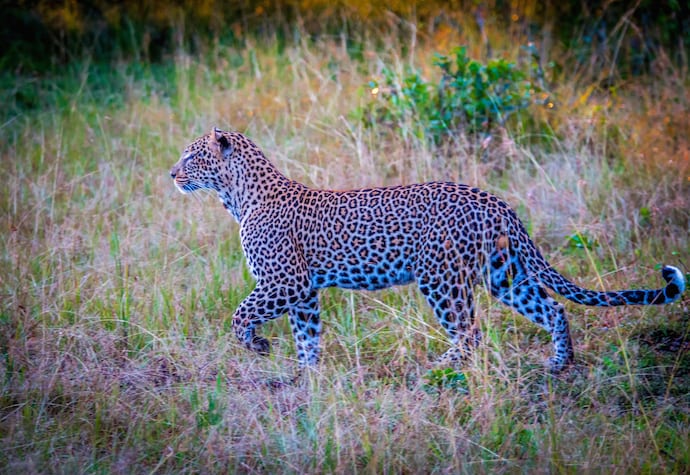
MAU FOREST
The Mau Forest of Kenya is one of the biggest forests in East Africa, with an area of 675,000 acres.
It has some of the highest rainfall rates in Kenya, and contains the largest water catchment area in the country. There are numerous rivers originating from the forest, which then feed large lakes (including Lake Victoria).
The Man Forest was traditionally inhabited by the hunter-gatherer civilization of the Ogiek people, but immigration has led to the clearing of much of the forest for settlement.
This (and human activities such as logging) has led to the deforestation of more than a fourth of the area since 1973.
In 2008, there was a memorable political argument over the forced eviction of peoples in order to preserve the forest. This would be good for the forest, but there are concerns over the ethics of the evictions, which are still going on in recent years.
READ MORE: Animals in Kenya: A Guide to 40 Species of Kenyan Wildlife

CROSS-NIGER TRASITION FORESTS
The Cross-Niger Transition Forests of Nigeria cover 8,000 square miles of tropical forest and savanna woodlands. Or, at least it used to.
Now, it is one of the most densely populated areas of Africa and most of the forest has been removed, leaving only grassland.
The main trees in the area are the Afzelia (which is native to Africa and often cultivated for timber) and the Borassus aethiopum palm tree.
There are small areas within the forest that are protected, and they are home to unique animals such as the Sclater’s Guenon (a.k.a. Sclater’s Monkey) and the Crested Chameleon.
The Niger River has traditionally been home to 900+ bird species, Cheetahs, Warthogs, Hippos, Leopards, Lions, Baboons, Elephants & more.
READ MORE: 50 Interesting Facts about Gorillas
FORESTS IN ASIA

KINUBALU NATIONAL PARK
On the northern part of the island of Borneo, Kinubalu National Park encompasses an area of roughly 300 square miles. Despite being one of the smaller forests on this list, it’s biodiversity and mix of habitats make it a big deal.
Kinabalu National Park is famous for its namesake mountain, which, at 13,435 feet, is the tallest one between New Guinea and the Himalayas. With elevations ranging from less than 650 feet up to Mount Kinabalu, the park boasts an extremely diverse and distinctive collection of plants and animals, including over 1000 species of orchids.
Habitats in Kinabalu vary from tropical lowlands and hill rainforest to sub-alpine forest, which has an incredible mix of plants found in the Himalayas, Australia, and China. It is a Center of Plant Diversity for Southeast Asia.
Though the park is a UNESCO World Heritage Site and is thus protected, industrial development has begun to threaten it more in recent years.
READ MORE: Top 5 Eco Attractions in Sabah, Borneo

THE SUNDARBANS
The world’s biggest mangrove forest, the Sundarbans encompasses around 38,000 square miles of land and water straddling the border of Bangladesh and northern India.
The forest is named after the sundari tree, the most populous in the area. The forest itself only constitutes about 40% of the area of the Sundarbans: Around 50% of it is water, and the rest is comprised of sand dunes and mudflats.
The Sundarbans National Park was designated a UNESCO World Heritage Site in the late 1980s, and three wildlife sanctuaries set up in the Bangladesh part of the Sundarbans were honored in 1997. The entire area is considered a UNESCO Biosphere Reserve.
This area is famously home to the Bengal Tiger, and is one of the last protected spaces in Bangladesh for them to live. But the mangrove boasts many other notable animal residents as well, including wild boars, Ganges river dolphins, cobras, Indian pythons, and crocodiles. It’s also home to over 250 species of birds.
READ MORE: Indian Animals: A Guide to 40 Indian Wildlife Species

SUMATRA RAINFOREST
Sumatra’s largest rainforest is comprised of three national parks: Gunung Leuser National Park, Kerinci Seblat National Park, and Bukit Barisan Selatan National Park. Together, they are home to nearly 10,000 square miles of UNESCO-protected forest.
Sumatra’s rainforests house many rare and endangered species. Noteworthy animals found there include Tigers, Elephants, Orangutans, Clouded Leopards, Sun Bears, and quite a few others.
Additionally, the beautiful forests of Sumatra are still home to numerous nomadic rainforest people who hunt and gather.
Unfortunately, Sumatra’s Rainforest is also among the world’s most endangered forests. In fact, it represents the most rapidly deforested area in the history of the planet. Some estimates suggest that over half of it has been felled in recent years in the name of creating rubber, paper, and palm oil plantations.
Though many NGOs are fighting to save these forests, industrialization and corruption are continuing to prove formidable adversaries.
READ MORE: Orangutan Conservation At Sepilok Rehabilitation Centre

XISHUANGBANNA
Stretching around 930 square miles (over 80% of which is covered in forest) China’s Xishuangbanna National Nature Reserve has a rare tropical forest ecosystem that includes plenty of virgin forest.
The site was recognized as a UNESCO International Man and Biosphere Reserve in 1993. It has more than 50 rare plant species, and there are several endangered animal species, including Asian elephants, Indo-Chinese tigers, and gibbons.
The climate of Xishuangbanna is very humid. Because the nature reserve is surrounded by mountains, it’s protected from cold north winds and opened to maritime moisture. Annual precipitation fluctuates from 40 to 80 inches a year.
The terrain has lots of hills, with lush, verdant basins between them. It also has many river crossings, namely the Lancang River system.
READ MORE: Can the Maritime Forest Survive Climate Change?
FORESTS IN AUSTRALIA

DAINTREE RAINFOREST
The Daintree Rainforest, a UNESCO World Heritage Site, is located in North Queensland, Australia– the continent where forest wildlife goes to get away from it all.
Sprawling across 450 square miles, Daintree is Australia’s oldest forest: It is believed to have survived over 100 million years.
The Daintree River, cutting through the rainforest, is replete with animals, with particular highlight given to the crocs and pythons.
While the Amazonian rainforest may technically have more diverse plant life, Daintree has the greatest number of rare flora of all the beautiful forests on this list.
Another knockout feature of visiting the Daintree Rainforest is that it has the unique characteristic of bordering another UNESCO site, the Great Barrier Reef Marine Park.
READ MORE: The Best National Parks in Australia

GONDWANA RAINFORESTS OF AUSTRALIA
The Gondwana Rainforests of Australia is the world’s most extensive subtropical rainforest. It consists of 50 separate reserves that total over 366,500 hectares, or 906,000 acres.
Gondwana was a supercontinent that began to break up during the Jurassic period. So the name is a reference to the fact that the supercontinent was covered in similar rainforests.
About 2 million people visit the reserves annually, and in 1986 it became a World Heritage Site because of its evolutionary history, geological and biological processes, and biodiversity.
Sadly, the area was so heavily logged that only 1% of the original range of the forests remains in Australia, with bushfires consistently posing more threats.
READ MORE: 20 Weird & Cute Australian Animals

FORESTS OF NEW GUINEA
At just over a meager 110,000 square miles, the forests of New Guinea are the third-largest tropical forest in the world (after the Amazon and Congo basin).
These beautiful forests are home to many mammals that are completely unique to the island. Though it’s only one-tenth the size of Australia, New Guinea has just as many species of rainforest plants and animals, including the world’s tiniest parrot and largest pigeon.
New Guinea also has the highest mountains east of the Himalayas. Due to the variances in altitude, the country has a huge range of climates, including the world’s only tropical glacier. The lowland forests are the most diverse, with the tallest canopy.
New Guinea’s montane forest is home to many unusual animals, such as Scott’s Tree Kangaroo and the Cyclops Long-beaked Echidna.
READ MORE: 60 Weird Animals Around the World
FORESTS IN EUROPE

BIALOWIEZA PRIMEVAL FOREST
Bialowieza Forest is a UNESCO World Heritage Site that straddles Belarus and Poland and claims roughly 1,191 square miles of land, with the official site occupying about half of that area.
It earned its UNESCO distinction for being a rare example of the old growth forests that once stretched across Europe, as well as a vital wildlife corridor.
In terms of animals, this beautiful forest is home to three different packs of Wolves, Bison, Wild Boar, and a variety of rare bird species. Some of the trees, which include oak, ash, spruce, etc., are over 600 years old.
A source of true pride, especially for Poland, this forest has been under protection since the 1400s. It was once declared a royal hunting ground. During the Soviet era, it was used as a retreat for elites.
However, keeping it protected has not been without challenges. The Lukoil Project (initiated by a Russian oil company) as well as timber and development/expansion have all threatened it in recent years.
READ MORE: The Least Visited National Parks in Europe

TIAGA BIOME/BOREAL FOREST
Taiga is the Russian name that is used globally for the biggest forest in the world. The Tiaga Biome is a nearly continuous belt of coniferous forest that stretches through the far northern reaches of Europe, Asia, and North America.
In addition to the biggest, it is also the longest forest in the world covering over 10% of the planet. Other than oceans, the Tiaga comprises the world’s largest biome.
Here, the winters are long and brutal, while the warmer seasons only have a maximum of 100 frost-free days. Evergreens such as spruce, fir, and pine dominate the relatively untouched landscape.
Though the world’s rainforests would seem to have more biodiversity, the Taiga also offers a host of impressive wildlife. Huge mammals such as Bears, Elk, and Moose are rampant throughout these woods, as are smaller predators such as Wolverines, Minks, and Pine Martins.
Perhaps most importantly, these boreal forests of the far north remain truly wild. And keeping this wilderness pristine will likely prove vital for us human beings to have any hope of a healthy planet in the future.
READ MORE: 10 Off The Beaten Path Ecotourism Destinations

THE BLACK FOREST
Encompassing around 2,300 square miles, Germany’s Black Forest (or Schwarzwald) is only the second largest forest in Germany in terms of surface area. But its reputation is certainly the biggest on the world stage. It’s mythical woods are at once ominous and endearing, well-traveled and haunting.
The Black Forest is named for its remarkably dense canopy, which causes it to be very dark at the floor level. Even so, it is one of the most beloved tourist destinations in Germany, noted for its old world villages and stunning natural beauty.
It’s also a very frequented ski spot, and has a famous spa town called Titisee-Neustadt. Consequently, it is well protected and regarded by Germans as a national treasure.
This is where cuckoo clocks come from, as well as countless tales of witches and werewolves. The forest borders France and Switzerland, and is part of the continental divide, with watersheds draining to the Atlantic and the Black Sea.
In terms of mountains, evergreens, streams, and lakes, it doesn’t get much more forest-y than this. It’s also laden with vineyards, castles, and villages.
READ MORE: 10 Best Mountains in the World (World Travel Bucket List)
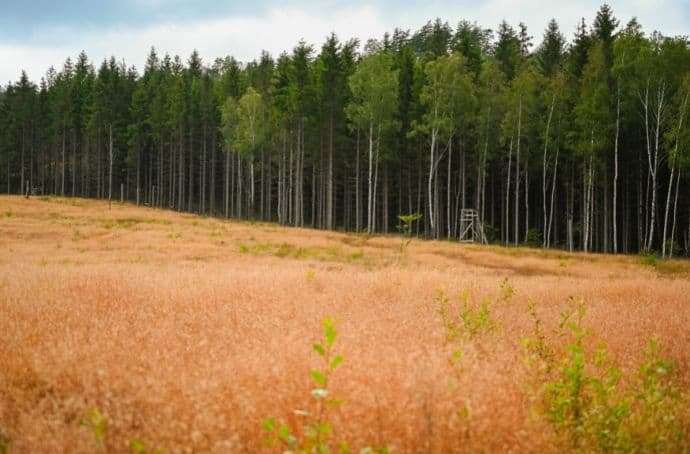
FORESTS OF SWEDEN
69% of the country of Sweden is forested, covering over 30 million hectares. Sweden has the world’s second largest area of land converted to forests, after Russia.
European beech, Norway spruce, and Scots pine are the most commonly found trees there, with the latter two making up 75% of Southern Sweden’s trees.
The largest forest in Sweden is Kolmården, which separates the two main agricultural areas in Sweden. The second largest forest of Sweden is Tylöskog, in Southeast Sweden. Both are long and wide, densely forested areas.
Historically, they separated the lands of the Swedes and the lands of the Geats in the 13th century. Forests remain extremely important in Sweden today, as it is one of the main facets of the Swedish economy.
Interestingly, about half of the forests in Sweden are privately owned by families, with the rest split between private companies and public or governmental organizations.
READ MORE: Sweden: The Moose Whisper & the Coolest Moose in Sweden

VIRGIN KOMI FORESTS
The Virgin Komi Forests– the largest virgin forest in Europe– are located in Russia’s Ural Mountains, expanding across roughly 12,500 square miles.
The Virgin Komi are composed of two Russian wilderness areas, the Pechora-Ilych Nature Reserve and Yugyd Va National Park, and were protected as a UNSECO treasure in 1995. They were the first natural site in Russia ever to get the honor.
In reality, the Virgin Komi Forests are part of the Taiga, the much larger forest system that appeared earlier on this list. But, because of their United Nations designation as a site of distinction, they warrant a place all their own on the list of the world’s largest forests.
The forests are primarily a combination of Siberian spruce, fir, and larch, under which roam Reindeer, Sables, and Mink. Unfortunately, the forests have become increasingly threatened in recent years by illegal logging and gold mining.
READ MORE: Visting Chernobyl Today
FORESTS IN NORTH AMERICA

GREAT LAKES – ST. LAWRENCE
The Great Lakes–St. Lawrence forest is in Canada, south of the boreal forest. Measuring around 45,000 square miles, it is Canada’s second biggest forest in Ontario. But it’s only a fraction of the size of the boreal forest.
Ecologically speaking, the area is considered a transition zone between the evergreens (such as spruces, hemlocks, and other conifers) of the boreal forest and the deciduous trees (such as oaks, birches, and maples) of the more southerly forests in the US.
The forest includes predator wildlife, such as Bears and Wolves. There is also plenty of big prey for them, in the form of Moose and Deer. Water-loving mammals like Beavers, Otters, and Muskrats are prevalent as well, as are some 220 species of birds.
Unfortunately, less than 5% of the original forest remains intact, due largely to agriculture and urban development. As a result, the Saint Lawrence River is considered one of the most polluted in the world, and the forest’s future remains vulnerable.
READ MORE: The 10 Best Canoe Trips (For Your World Bucket List)

LACANDON JUNGLE
The Lacandon Jungle stretches east across Mexico’s southernmost state, Chiapas, into the Yucatan Peninsula and down into Guatemala. In total, it includes over 7,300 square miles of beautiful lakes, rivers, and waterfalls.
At the center of the Lacadon Jungle is the Monte Azules Biosphere Reserve in Chiapas. Much of the forest outside this reserve has been at least partially damaged. However, it is still the largest montane rainforest in North America.
Within the jungle, there are several sacred Mayan archeological sites, including Palenque and Bonampak. Nowadays, the Lacandon Maya (who have legal title to most of the reserve lands) are at odds with the Zapatistas, who would like to farm it.
The forest includes gigantic trees, such as the Ceiba (Tree of Life for the Mayan People) and Guanacaste, and huge flora, like elephant ears and palms. Macaws, Monkeys, Jaguars, and Crocodiles all call these woods their home, as do many tropical birds.
READ MORE: The 16 Best Mayan Ruins to Explore

SEQUOIA FORESTS
The huge forests of the Sierra Nevada mountains have to be on this list because they’re home to Sequoias, the biggest trees on the planet. The 38 groves that comprise the Sequoia National Forest provide shade for about 1865 square miles of wilderness.
A Sequoia named General Sherman is the world’s undisputed largest tree (by volume). It is believed to be over 2000 years old, weighing more than 2.5 million pounds and stretching over 275 feet tall.
The Sequoia groves are all located in south-central California, in the foothills of the Sierra Nevada mountains. They can be visited in Yosemite, Sequoia. and King’s Canyon National Parks. Camping is available, and Black Bears are frequently spotted there.
There are coastal redwood forests (the tallest trees on the planet) in California as well. But those are located along the northern coast, starting just below the Bay Area. Sequoia and Redwood trees are often mistakenly considered the same, but they are actually distinctly different.
READ MORE: List of National Parks by State (An Epic Guide)
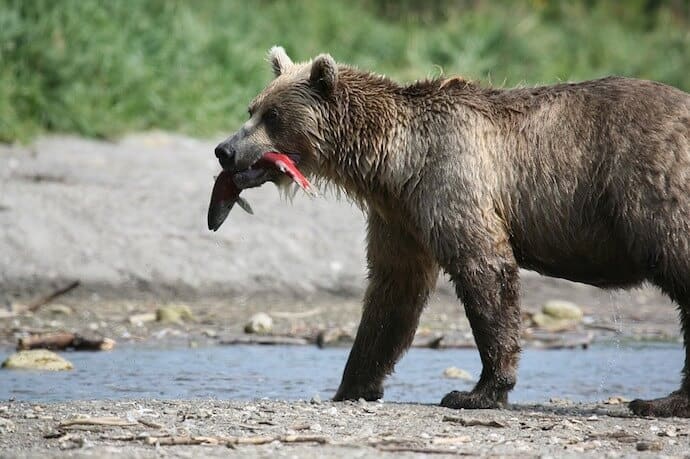
TONGASS
The Tongass National Forest in southeastern Alaska is the United States’ largest national forest at 26,500 square miles. About a third of that area is managed as complete wilderness.
The biggest tourist attractions in this forest are its glaciers. This is one of the few spots where some of the 100,000 glaciers in Alaska reveal themselves as enormous ice sheets. Mendenhall Glacier, near Juneau, is easily the most visited.
That said, the Tongass also has fantastic wildlife spotting. Bears are commonplace in the region and can be seen fishing in the creeks, where the Salmon run. And, as in much of Alaska, Bald Eagles are almost always present.
Additionally, there are a lot of recreational activities, such as boating, camping, hiking, and fishing. Over 150 cabins are available for rent in The Tongass.
READ MORE: Alaska Wildlife Conservation Center Photo Essay

BOSAWÁS BIOSPHERE RESERVE
Located in the northern part of Nicaragua, the Bosawás Biosphere Reserve covers nearly 8,500 square miles. Protected as a UNESCO World Heritage Site, it’s the largest rainforest in Central America and the second largest in the Western hemisphere.
This humid tropical forest canopies over a hilly terrain– an area that includes a biosphere nucleus and a buffer zone. Together, it accounts for about 15% of the total land in Nicaragua.
Bosawás (which was named after the Bocay River, Mount Saslaya, and Waspuk River) was one of three large reserves that resulted from the Sandinista revolution.
The forest is believed to be home to up to 200,000 types of insects. Its birds include the elusive Quetzal, Guacamayas (macaws), and Harpy Eagles. It’s also home to Central America’s two big cats, the Jaguar and Puma, as well as their favorite dinner, Tapirs.
There are two indigenous tribes who live on the reserve, the Sumos and Miskito people, who still practice subsistence farming today. Overall, the reserve has a total population of about 130,000 people.
READ MORE: Exploring Isla De Ometepe Biosphere Reserve (Nicaragua)
FORESTS IN SOUTH AMERICA/CENTRAL AMERICA

AMAZON RAINFOREST
Spreading across much of Brazil, Bolivia, Colombia, Ecuador, French Guiana, Guyana, Peru, and Suriname, the Amazon Rainforest is the most biodiverse and largest rainforest in the world. It covers approximately 2.2 million square miles.
Collectively, there are over a million species accounted for in the dense rainforest vast basin. And who knows how many more are still waiting to be discovered? It’s also home to the world’s second longest and largest (by water flow) river.
Unfortunately, deforestation (especially in Brazil) has threatened one of the world’s most famous forests since the beginning of the 20th century. Yet the Amazon Rainforest basin still immense, stretching over 1200 miles.
The forest is as dense, hot, and potentially dangerous as it is beautiful. But it’s also a treasure trove of plants and wildlife, such as Rosewood, Jaguar, Manatee, and Brazil Nut.
READ MORE: The 20 Longest Rivers in the World (by Continent)

ATLANTIC FOREST
Located along the coastline of Brazil, moving all the way into Paraguay and Argentina, the Atlantic Forest was once over 500,000 square miles. Unfortunately, only about 15% of the forest– roughly 75,000 square miles– remains intact today.
While that may seem like a lot of forest, the issue is that it is home to some of the rarest species in the world. It is also one of the most biodiverse places on the planet.
The Atlantic Forest has over 2,000 species of animals (not counting insects) and is home to over 60% of Brazil’s threatened animals.
That’s not even getting into the fact that 450-plus tree species– more than all of the North America’s eastern seaboard– have been identified in just 2.5 acres of the Atlantic Forest.
While it may be significantly smaller than the neighboring Amazonian rainforest, the Atlantic Forest is still amongst the world’s largest and most important forests.
READ MORE: 10 Latin American Ecotourism Adventures

MONTEVERDE CLOUD FOREST
The Monteverde Cloud Forest of Costa Rica consists of about 26,000 acres of cloud forest, 90% of which is virgin forest.
But what is cloud forest? Sometimes called a water forest, a cloud forest is a tropical or subtropical, mountainous, and moist forest that has persistent low-level cloud cover, usually in the form of fog.
Because of the conditions of these rare forests, there are abundant populations of mosses, lichens, orchids, as well as a large number of Costa Rica animals.
In the Monteverde Cloud Forest, you’ll find over 2,500 plant species, 100 species of mammals, 400 species of birds, 1,200 species of reptiles and amphibians, and thousands of insects.
It’s one of the world’s last remaining habitats that can support all six cat species (Jaguars, Ocelots, Pumas, Oncillas, Margays, and Jaguarundis). You’ll also find the endangered Three-wattled Bellbird and Resplendent Quetzal here.
READ MORE: Ecotourism in Costa Rica: The Ultimate Eco Travel Guide

VALDIVIAN RAINFOREST
The Valdivian Rainforest is a temperate rainforest in the southern part of South America, between the Andes Mountains and the Pacific coast.
It’s ranked among the world’s most beautiful forests because it is considered a biogeographic island. That means it’s completely separated from other forests, oceans, and desert borders. The area is thought to have been inhabited by humans as far back as 12,000 BC.
At almost 100,000 square miles, this massive forest is full of national parks, beaches, rivers, lakes, islands, and hiking trails.
Due to its isolation, there are numerous endemic species that are exclusively found in Valdivia, such as primitive marsupials and Pudu, the world’s smallest deer.
There are also many special trees, including the Antarctic beech, Alerce (which is super tall and old), and monkey puzzle trees.
READ MORE: The Best Hiking Trails for your World Travel Bucket List

FAQs & FOREST FACTS
What is the Largest Forest in the world?
The Amazon is the largest rainforest in the world. It covers approximately 2.2 million square miles. The Taiga is the largest forest in the world and stretches through the far northern reaches of Europe, Asia, and North America.
Where is the Amazon Rainforest located?
The Amazon rainforest reaches across Brazil, Bolivia, Colombia, Ecuador, French Guiana, Guyana, Peru, and Suriname.
What is the Biggest Jungle in the world?
The definition of jungle is “an impenetrable thicket or tangled mass of tropical vegetation”. This Jungle definition is usually associated with tropical forest or rainforest, which would make the Amazon the biggest jungle in the world.
Where is the Largest Tree in the world?
General Sherman is the world’s largest tree (by volume) and is located in the Sequoia Forest in California. It is believed to be over 2000 years old, weighing more than 2.5 million pounds and stretching over 275 feet tall.
What is the Biggest North American Forest?
Canada’s Boreal Forest is the biggest. The Biggest National Forest in America is Tongass which is located in Alaska.
What is the Largest Forest in Asia?
The Sundarbans is the world’s biggest mangrove forest. It is located in Bangladesh and northern India.
Where is the Biggest Forest in India?
The Biggest Forest in India is located in the state of Madhya Pradesh. There are 9 National Parks and 35 Wildlife sanctuaries. The largest National Park in Madhya Pradesh is Kanha National Park.–Jonathon Engels
Looking to book your next trip? Check out the following services we use!
DollarFlightClub or Airfarewatchdog to find a cheap plane tickets.
Booking.com to find a hotel deals.
Viator for a stellar day tour.
Lonely Planet for Travel Guides.
World Nomads for Travel Insurance
AutoEurope for European Car Rentals or Rental Cars.com for US Car Rentals.
Outdoorsy RV and trailer rentals
TrustedHousesitters we’ve found great pet sitters to watch our house and love on our two dogs!
Looking for essential Travel Gear? Check out these great options!
The Best Travel Clothes for Women & Men
The Best Travel Shoes
Cool Camping Gear
The Best Backpacks for Travelers
[ad_2]







